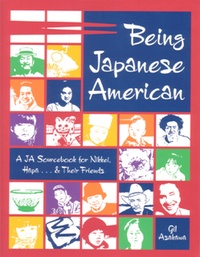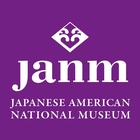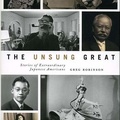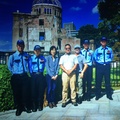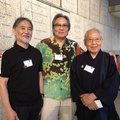“Do you have to go benjo?”
If you know what this phrase means, there’s a high probability that you’re Japanese American. And there’s also a high probability that you’ll love Gil Asakawa’s book, Being Japanese American.
But even if you don’t know that benjo means “bathroom,” you may still be entertained by this lighthearted view into the unique lingo, idiosyncrasies and nuances of Japanese American life.
“Stone Bridge Press initially approached me to write the book because they were interested in publishing a book about the Japanese American experience. And they were familiar with my online column, the Nikkei View (www.nikkeiview.com),” Asakawa explains. “The one thing we agreed on was that the book needed to be fun and easy to connect with. I have tons and tons of books about JAs (Japanese Americans), and so many of them are wonderful but oh-so-academic.”
“I like that stuff, but man, it’s so important to make younger JAs connect with information,” says Asakawa. “I didn't want to alienate anyone and get too brainy!”
The resulting work is a zippy collection of songs, photos, superstitions, family recipes, personal memories, and historical facts about Japanese American history. Also included throughout the margins of the book are a humorous glossary of Japanese words, quotes and thoughts from other Japanese Americans.
“I sent out a survey to a bunch of JAs and many of them got forwarded on to others,” says Asakawa. “I ultimately had a couple of dozen people respond with very thoughtful answers. I think their comments in the margins add depth to the book and make it much richer.”
“The book evolved in the writing because I realized quickly that you can’t really lump all Japanese Americans into one tidy bucket,” the author notes. “One of the things I learned about myself was how different my experience is from other JAs. I was sort of shocked, really, to find how many JAs don’t have the slightest bit of interest in visiting Japan. There’s such a wide variety of values, experiences, styles, and levels of acculturation and assimilation that I realized I had to speak personally, from my perspective, like my Nikkei View columns, and not try to speak for all JAs.”
“But I think the most important chapter is the one about being Asian Pacific American, not just Japanese American,” he adds. “Japanese Americans are the only Asian population in the U.S. that’s been shrinking. Because of continued out-marriage and less immigration of Japanese to the U.S., our community just isn’t growing. So it becomes that much more important to hold on to our culture and value our heritage. And at the same time, that we expand our concept of ourselves to include the very important hapas (Asians of multiracial heritage) and embrace the larger Asian Pacific American communities.”
“Asians in America as a whole will always remain invisible and unempowered until we come together and share, value, and enjoy our many cultures together,” Asakawa says. “We don’t have to all think alike and we’ll never all look alike. But we need to work together for a better tomorrow. I feel it’s important to understand how people of color—especially Asians—are woven into the cloth that is American society.”
* This article was originally published on the Japanese American National Museum Store Online.
© 2004 Japanese American National Museum


